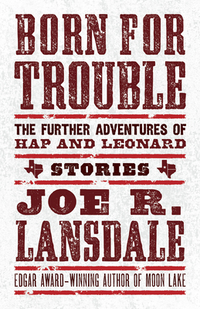The Rising Tide by Sam Lloyd
 Wednesday, March 23, 2022 at 8:38AM
Wednesday, March 23, 2022 at 8:38AM 
First published in Great Britain in 2021; published by Penzler Publications/Scarlet on March 15, 2022
Relationship drama bubbles through the backstory in The Rising Tide. Lucy and Daniel Locke are married. At the 18th birthday party of their daughter Billie, Daniel’s friend Nick Povey made a pass at Lucy. That same day, Daniel learned that Nick betrayed him in a way that will jeopardize the continuing existence of Daniel’s business. By the time the story begins, Daniel and Lucy are about to lose their home in Skentel, a village on England’s North Devon Coast.
In the present, Daniel takes their boat into the sea despite storm warnings. The boat is found adrift but sinking as the storm is building. Nobody is aboard. Lucy soon learns about the boat and realizes that Daniel and their two kids are missing. She joins the local boat owners as they perform a search-and-rescue operation.
As Lucy is searching for her husband and children on a violent sea, all she can think about is yelling at Daniel. At least that gives her a break from thinking about Jake Farrell, who agreed to take her on his boat to search for her family. Jake is Lucy’s ex.
At another point in the story, Lucy runs into the ocean and nearly drowns just to “see what it was like.” This is just hours after she was drenched in seawater after the boat in which she was searching for her family nearly capsized. Fear that a parent’s children are dead (although Lucy never believes that because “mother’s instinct”) might well motivate a parent to engage in bizarre behavior, but Sam Lloyd never managed to make me sympathize with Lucy’s hysteria.
On the other hand, perhaps the reader is not meant to like Lucy, at least not while the plot is taking shape. As the mystery of the missing kids deepens, collateral characters make unflattering statements suggesting Lucy might not be likable at all. Lucy has ambiguous thoughts about “what happened in Portugal.” Those moments add a layer of intrigue as the reader begins to wonder whether Daniel, who seems to be the villain, might have acted in response to something Lucy did.
Detective Inspector Abraham Rose investigates the suspicion that Daniel scuttled the boat, drowned his kids, and threw himself overboard. The evidence all points in that direction, which is enough to make the reader believe it isn’t true.
Rose has lung cancer. He’s also having a crisis of faith that leads him to believe in Satan but not so much in God. He nevertheless believes his investigation is compelled by “a higher authority” than the law. Since he isn’t delusional, it isn’t clear why he harbors that belief. Rose’s thoughts often turn to a mother who suffers from dementia and a girlfriend he lost long ago. Those thoughts inspire him to feel sorry for himself, particularly when prayer doesn’t make him feel any better.
Lloyd follows the common convention of adding first-person narratives to the story without identifying the narrator. Since it is clear that the narrator dislikes Lucy, and given the positioning of the narratives within the story, the reader is encouraged to assume that the narrator is Daniel. Seasoned readers will suspect that they are being played.
Part of the truth is revealed somewhere around page 250 (of 350). Another part (perhaps derived from a famous book that became a famous movie) is revealed a dozen pages later. If the truth seems a bit contrived, that’s the way the modern thriller goes. The story then becomes a whodunit that challenges the reader to guess the identity of a villain who has contributed to Lucy’s mess. The villain’s motivation is thriller-standard and not particularly imaginative or credible. On the other hand, the villain’s identity is not easily guessed (at least not by me). But on my third hand, I didn’t buy the ending because the villain’s actions are cartoonish. On my final hand, those are common flaws in modern thrillers and not sufficient reason to advise against reading the book.
The “mother’s fierce love for her daughter” theme is overdone, although I give Lloyd credit for writing an intensely moving scene at the end of Part I. The long walk to the ending feels padded, as though Lloyd wanted to avoid rushing to a climax and instead dragged the story to its conclusion. Characters share thoughts they had shared several times already. Regrets and loss of faith and memories of “a life that no longer exists” and just get on with it, can’t you? Even after the climactic moment arrives, another 50 pages await. A tightening edit could have enhanced this thriller’s sense of urgency and kept tension from dissipating.
Still, the novel places interesting characters in difficult situations, keeps the reader guessing about whether protagonists are good or evil, and creates a reasonable amount of suspense. The suspense wanes and the characters are problematic, but Lloyd’s prose is vivid and the story has enough strong moments to make it worth reading.
RECOMMENDED
 TChris |
TChris |  Post a Comment |
Post a Comment |  Great Britain,
Great Britain,  Sam Lloyd in
Sam Lloyd in  Thriller
Thriller 


